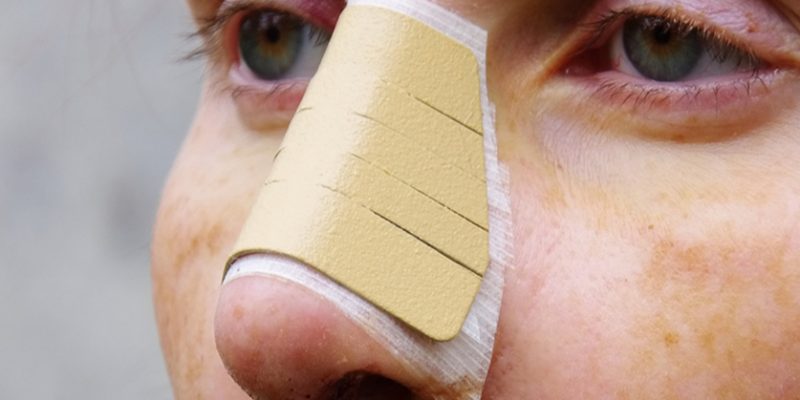Are you considering rhinoplasty but need clarification on the process and what to expect? Look no further! This comprehensive guide will cover all the essential aspects of rhinoplasty to help you make an informed decision about your procedure.
Rhinoplasty, commonly known as a nose job, is a surgical procedure to reshape the nose to improve its appearance and functionality. Whether you wish to correct a congenital disability, enhance your facial harmony, or address breathing difficulties, understanding the essentials is crucial.
Benefits And Risks Of Rhinoplasty Surgery
Rhinoplasty offers both aesthetic and functional benefits, including:
- Improved Facial Harmony: Reshaping the nose can enhance overall facial balance and proportion, creating a more harmonious appearance.
- Correction of Congenital Defects: Rhinoplasty can address nasal deformities present from birth, such as a crooked nose, hump, or deviated septum.
- Enhanced Self-Confidence: By addressing cosmetic concerns, rhinoplasty can boost self-esteem and improve one’s self-image.
However, it’s essential to be aware of potential risks and complications:
- Infection: Like any surgery, rhinoplasty carries a risk of infection. Following postoperative care instructions can help minimize this risk.
- Nasal Obstruction: Scar tissue formation or changes in nasal passages can lead to temporary or permanent nasal obstruction post-surgery.
- Unsatisfactory Results: While surgeons aim for optimal outcomes, there’s a chance of not achieving the desired results. Managing expectations and clear communication with your surgeon are crucial.
For those considering rhinoplasty, seeking top-rated rhinoplasty in Philadelphia can provide access to experienced surgeons skilled in delivering exceptional results. Understanding both the benefits and risks of rhinoplasty is critical to making an informed decision and ensuring a successful outcome.
Preparing For Rhinoplasty: What To Expect Before The Procedure
Preparing for rhinoplasty involves several key steps:
- Consultation: Schedule a consultation with a skilled plastic surgeon specializing in rhinoplasty. Discuss your goals and concerns during this appointment, and understand the procedure in detail.
- Medical Evaluation: Your surgeon will conduct a thorough medical evaluation, reviewing your health history and performing necessary tests to ensure you’re a suitable candidate for surgery.
- Expectation Discussion: Discuss your expectations with your surgeon, understanding what’s achievable and any limitations. Ask questions and address concerns to align your goals with realistic outcomes.
- Preoperative Instructions: Follow your surgeon’s preoperative instructions carefully. This may involve adjustments to medications, lifestyle changes like smoking cessation, and fasting before surgery.
By completing these steps, you’ll be well-prepared for your rhinoplasty, ensuring a successful procedure and smoother recovery.
The Rhinoplasty Procedure: Step-By-Step Guide
The rhinoplasty procedure involves several steps:
- Anesthesia: You’ll receive either general or local anesthesia with sedation for comfort.
- Incisions: Your surgeon will make incisions externally (open rhinoplasty) or internally (closed rhinoplasty).
- Reshaping: Cartilage and bone are carefully adjusted to achieve desired results, correcting asymmetry or structure.
- Closing: Incisions are closed using sutures with dissolvable or removable options.
- Post-op Care: You’ll receive instructions on wearing a nasal splint, managing pain/swelling, and avoiding strenuous activities during recovery.
Understanding this process can alleviate concerns about rhinoplasty.
Recovery And Aftercare Tips For Rhinoplasty Patients
Here are tips from Dallas rhinoplasty experts for navigating your rhinoplasty recovery:
- Adhere to Instructions: Follow your surgeon’s postoperative guidelines meticulously for proper healing and minimize complications.
- Manage Discomfort: Expect some discomfort, swelling, and bruising post-surgery. Pain medication and cold compresses can help alleviate these symptoms.
- Protect Your Nose: Avoid activities that could bump or injure your nose. Be gentle when washing your face or changing clothes.
- Be Patient: Swelling takes time to subside, and final results may take months to a year to fully appear. Stay patient and allow your body to heal naturally.
With these tips, you can facilitate a smoother recovery and optimize your rhinoplasty results.
Common Complications And How To Minimize Them
Complications with rhinoplasty, though rare, are worth noting:
- Infection: Diligently follow your surgeon’s wound care instructions to minimize infection risk. Keep incision sites clean, and avoid touching your nose without washing your hands.
- Bleeding: Expect some bleeding post-surgery, but notify your surgeon if bleeding is excessive or persistent.
- Swelling and Bruising: Cold compresses and elevating your head can help manage swelling and bruising, which are common in the initial stages.
- Scarring: While scars are typically discreet, some may develop visible scars. Adhering to proper wound care and sun protection can mitigate this risk.
Selecting a skilled surgeon and adhering to postoperative instructions are vital in reducing these risks.
Conclusion: Achieving The Nose Of Your Dreams With Rhinoplasty
Rhinoplasty is a transformative procedure that can enhance facial harmony, correct congenital disabilities, and improve self-confidence. Understanding the different types of rhinoplasty, the benefits and risks, and the recovery process is essential when considering this surgical journey.
By following the guidance of a skilled surgeon, adhering to postoperative care instructions, and maintaining patience throughout the healing process, you can achieve the nose you’ve always desired.
Take the time to research and choose a reputable surgeon, communicate your goals effectively, and trust in their expertise. With the right mindset and a well-informed decision, rhinoplasty can be a life-changing experience that brings you closer to the nose you’ve always dreamed of. So, embrace your journey and enjoy the transformative power of rhinoplasty!
Remember, the information provided in this article is for educational purposes only and should not replace professional medical advice. Consult a qualified plastic surgeon to discuss your situation and determine the best course of action for your rhinoplasty procedure.














Comments